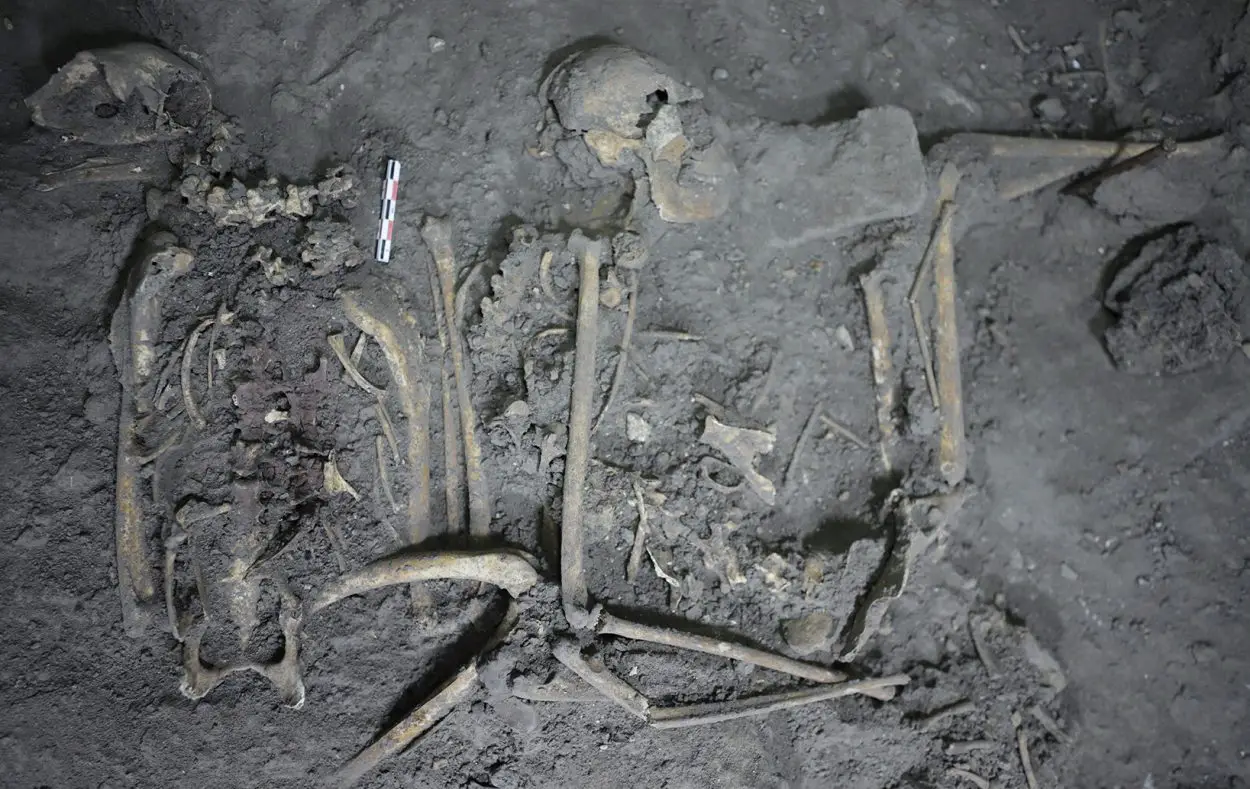Archaeologists conducting excavations at Teōtīhuacān have discovered the 1,700-year-old remains of a spider monkey, indicating the earliest evidence of primate captivity, translocation, and gift diplomacy between Teotihuacán and the Maya.
Teōtīhuacān, named by the Nahuatl-speaking Aztecs, and loosely translated as “birthplace of the gods”, is an ancient Mesoamerican city located in the Teōtīhuacān Valley of the Free and Sovereign State of Mexico, in present-day Mexico.
The development of Teōtīhuacān can be identified by four distinct consecutive phases, known as Teōtīhuacān I, II, III, and IV, with phase I starting around 200 – 100 BC during the Late Formative era, when the inhabitants coalesced around sacred springs in the basin of the Teōtīhuacān Valley.
During phase II from AD 100 to 350, the city population rapidly grew into a large metropolis, partly due to the economic pull and opportunities a thriving urban settlement presented, but also based on environmental factors suggested by the eruption of the Xitle volcano, forcing the migration from other settlements out of the central valley.

It was during this phase that many of the most notable monuments within Teōtīhuacān were constructed, including the Pyramid of the Sun (the third largest ancient pyramid after the Great Pyramid of Cholula and the Great Pyramid of Giza), the Pyramid of the Moon, the Avenue of the Dead, and the Ciudadela with the Temple of the Feathered Serpent Quetzalcoatl.
Archaeologists from the University of California found the complete skeletal remains of a spider monkey alongside the remains of a golden eagle and several rattlesnakes.
Surrounding the animal remains were fine greenstone figurines made of jade from the Motagua Valley in Guatemala, copious shell/snail artifacts, and lavish obsidian goods such as blades and projectiles points.
According to a paper published in the journal PNAS, the discovery is consistent with evidence of live sacrifice of symbolically potent animals participating in state rituals observed in Moon and Sun Pyramid dedicatory caches.
More importantly, the Spider Monkey represents the earliest evidence of primate captivity, translocation, and gift diplomacy between Teōtīhuacān and the Maya, and debunks previous beliefs that Maya presence in Teōtīhuacān was restricted to migrant communities.
“Teōtīhuacān attracted people from all over, it was a place where people came to exchange goods, property, and ideas. It was a place of innovation,” said Sugiyama, who is collaborating with other researchers, including Professor Saburo Sugiyama, co-director of the project and a professor at Arizona State University, and Courtney A. Hofman, a molecular anthropologist with the University of Oklahoma. “Finding the spider monkey has allowed us to discover reassigned connections between Teōtīhuacān and Maya leaders. The spider monkey brought to life this dynamic space, depicted in the mural art. It’s exciting to reconstruct this live history.”
https://doi.org/10.1073/pnas.2212431119
Header Image – The complete skeletal remains of a 1,700 year-old female spider monkey found in Teōtīhuacān, Mexico – Image Credit : Nawa Sugiyama, UC Riverside





